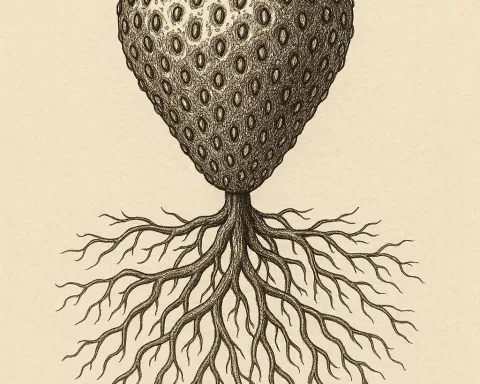The Eastern Cape Provincial Government is tackling child malnutrition with a multi-sectoral approach that includes extending Child Support Grants, operating a School Malnutrition Programme, providing income-generating skills to mothers, and collaborating with global organizations. Their efforts have led to a decrease in the fatality rate due to Severe Acute Malnutrition, highlighting their commitment to the future of their children. The government has also introduced various health initiatives and collaborations with organizations like UNICEF and UNFPA. Their dedication to bettering socio-economic circumstances is palpable and promising.
What is the Eastern Cape’s response to child malnutrition?
The Eastern Cape Provincial Government has implemented a broad, multi-sectoral approach to tackle child malnutrition, including extending Child Support Grants, operating a School Malnutrition Programme, providing income-generating skills to mothers, and forging alliances with global organizations. Their efforts have led to a decrease in the fatality rate due to Severe Acute Malnutrition and demonstrate their commitment to the future of their children.
Eastern Cape’s Response to SAHRC Report
In reaction to the South African Human Rights Commission’s (SAHRC) report on child malnutrition and the right to food, the Eastern Cape Provincial Government outlined its strategies and practical steps to confront this challenge. Published on November 9, 2023, the report shed light on the province’s ongoing battle against poverty, inequality, and unemployment, with particular emphasis on child malnutrition.
From the dawn of democracy, the Eastern Cape has been rolling out multiple policy interventions and strategies. They’ve adopted a broad, multi-sectoral approach to deal with these socio-economic hurdles. The government’s efforts are notably discernible in the sphere of child malnutrition. For example, the fatality rate due to Severe Acute Malnutrition (SAM) has seen a decrease from 11.8% in 2017/18 to 7% in the fiscal year 2022/2023; a positive progression.
The province’s progress is largely due to inter-sectoral cooperation that involves various parties, including the Department of Social Development, SASSA, and more. Collectively, they aim to address the social determinants of health that lead to child malnutrition, highlighting the vital role played by these numerous stakeholders.
Measures Adapted by Eastern Cape
Through the South African Social Services Agency (SASSA), the Eastern Cape government has extended Child Support Grants (CSG) to millions of children. By allocating over R1 billion to CSG, they ensure that nearly two million children, including those relying on Care Dependency and Foster Care Grants, are elevated from poverty. Moreover, approximately 3950 undocumented children are reaping benefits from the CSG.
The government’s measures stretch across various sectors and levels. They operate a School Malnutrition Programme that provides wholesome meals to children, aiding them in cultivating healthy eating habits. The Department of Social Development pitches in by offering food parcels and regular meals for mothers and infants through the Social Relief of Distress and the Indlezana Programme.
In addition to providing food and nourishment, the interventions also focus on empowering mothers with income-generating skills through various initiatives. Government programs also cater to child-headed households and street children via community-based prevention and early intervention schemes.
Health Programs & Collaborations
The province has introduced a range of health initiatives to stimulate growth and prevent malnutrition in children. These encompass growth monitoring, breastfeeding promotions, prevention of teenage pregnancies, reinforcing nutritional supplementation, and educating caregivers on feeding practices.
The Provincial Government is not operating independently. It has forged alliances with global organizations like the United Nations Children’s Fund (UNICEF) and United Nations Population Fund (UNFPA) to execute community tactics to lessen child morbidity and mortality.
The province has acknowledged the impact of impoverished households and food scarcity on malnutrition. Children born to teenage mothers or in situations involving substance abuse or domestic violence are more prone to receive inadequate care, which influences their nutritional intake. To counteract this, the province promotes food production through backing agrarian projects, thereby boosting household food security.
The committee’s recommendations, which urge enhanced monitoring and interventions, have been acknowledged by the provincial government. They’ve voiced their dedication to bettering the socio-economic circumstances of the province’s inhabitants through varied strategic interventions.
In conclusion, the Eastern Cape Provincial Government is not merely recognizing the problems linked to child malnutrition and the right to food; they’re actively enacting strategies and interventions to combat them. This illustrates the government’s commitment to the future of their children – a pledge that is both palpable and promising.
What is the multi-sectoral approach adopted by the Eastern Cape Provincial Government to tackle child malnutrition?
The Eastern Cape Provincial Government has implemented a broad, multi-sectoral approach that includes extending Child Support Grants, operating a School Malnutrition Programme, providing income-generating skills to mothers, and forging alliances with global organizations like UNICEF and UNFPA. These efforts have led to a decrease in the fatality rate due to Severe Acute Malnutrition and demonstrate their commitment to the future of their children.
How did the Eastern Cape government respond to the SAHRC report on child malnutrition?
In response to the South African Human Rights Commission’s (SAHRC) report on child malnutrition and the right to food, the Eastern Cape Provincial Government outlined its strategies and practical steps to confront this challenge. They’ve adopted a broad, multi-sectoral approach to deal with these socio-economic hurdles and have made notable progress in reducing the fatality rate due to Severe Acute Malnutrition.
How has the Eastern Cape government extended Child Support Grants to combat child malnutrition?
Through the South African Social Services Agency (SASSA), the Eastern Cape government has extended Child Support Grants (CSG) to millions of children. By allocating over R1 billion to CSG, they ensure that nearly two million children, including those relying on Care Dependency and Foster Care Grants, are elevated from poverty. Moreover, approximately 3950 undocumented children are reaping benefits from the CSG.
What measures has the Eastern Cape government adapted to tackle child malnutrition?
Apart from extending Child Support Grants, the Eastern Cape government operates a School Malnutrition Programme that provides wholesome meals to children, offers food parcels and regular meals for mothers and infants through social relief programs, and empowers mothers with income-generating skills through various initiatives. Government programs also cater to child-headed households and street children via community-based prevention and early intervention schemes.
What health initiatives has the Eastern Cape government introduced to stimulate growth and prevent malnutrition in children?
The province has introduced various health initiatives, including growth monitoring, breastfeeding promotions, prevention of teenage pregnancies, reinforcing nutritional supplementation, and educating caregivers on feeding practices. They’ve also forged alliances with global organizations like UNICEF and UNFPA to execute community tactics to lessen child morbidity and mortality.
What other interventions has the Eastern Cape government adopted to combat child malnutrition?
Apart from providing food and nourishment, the interventions also focus on promoting food production through backing agrarian projects, thereby boosting household food security. The government also acknowledges the impact of impoverished households and food scarcity on malnutrition and offers community-based prevention and early intervention schemes to cater to child-headed households and street children. The province has voiced their dedication to bettering the socio-economic circumstances of their inhabitants through varied strategic interventions.








